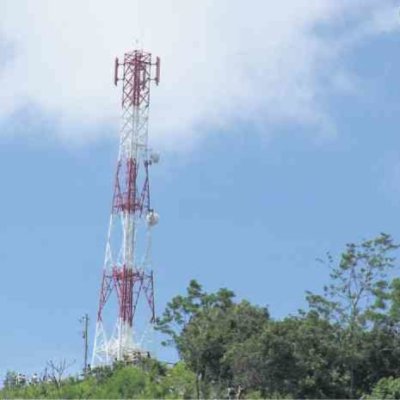  Power regulator CERC has allowed state-owned transmission utility Power Grid to offer towers to telecom companies for BTS (base trans-receiver station) installation to improve mobile connectivity, especially in remote rural areas.
The move will not only address the issue of deficiency of telecom coverage in the country, particularly remote areas, but this segment could also be money spinner for Power Grid. Besides, the power distribution utilities will get a share of income, which would eventually reduce tariff burden on consumers.
"....the proposal of the petitioner is not contrary to the provisions of the Act. Accordingly, we allow the proposed business of the Petitioner," Central Electricity Regulatory Commission (CERC) said in its recent order.
Power Grid had sought the CERC's permission to utilise existing electricity transmission infrastructure for telecommunication purposes.
The power utility had approached the commission to "engage in other business for optimum utilisation of the assets".
It submitted said before the CERC that the transmission towers can be used for mounting the telecom antennas and also for mounting the BTS and associated auxiliary power supply equipment for mobile communication by constructing a platform on the transmission line tower itself.
Besides, Power Grid had pleaded that this would also help in providing reliable power supply for operation of BTS equipment from transmission line itself by adopting suitable technologies.
On the revenue sharing, the CERC held, "Initially, sharing of revenue shall be in the ratio of 50:50 of the net revenue, after deduction of all direct and indirect costs. However, the same shall be reviewed on completion of one year".
The Power Grid has around 1.5 lakh high voltage transmission towers, which are suitable for installation of mobile antenna/BTS. These transmission line towers are spread across the country and passing through remote/rural areas.
Due to non-availability of reliable power supply in rural area, the operators are dependent on diesel power generators, which has high operational cost as well as carbon footprint.
The availability of power supply is more than 99.5 per cent at Power Grid towers. Therefore, there is no need to install diesel generator sets.
Mobile operators need to incur cost towards land leasing, towers installation etc and also facing local ROW (right of way) issues. To overcome this issue, platform on tower legs will be created for installation of BTS. The platform will be at a height of 7 to 8 metres and therefore, will not be affected by flood etc.
To meet the demand of 4G/5G Data, Power Grid OPGW fibre is running on high voltage lines and fibre connectivity may also be provided for BTS.
This initiative will also aid "Digital India" programme of the government, which envisages universal mobile connectivity. |